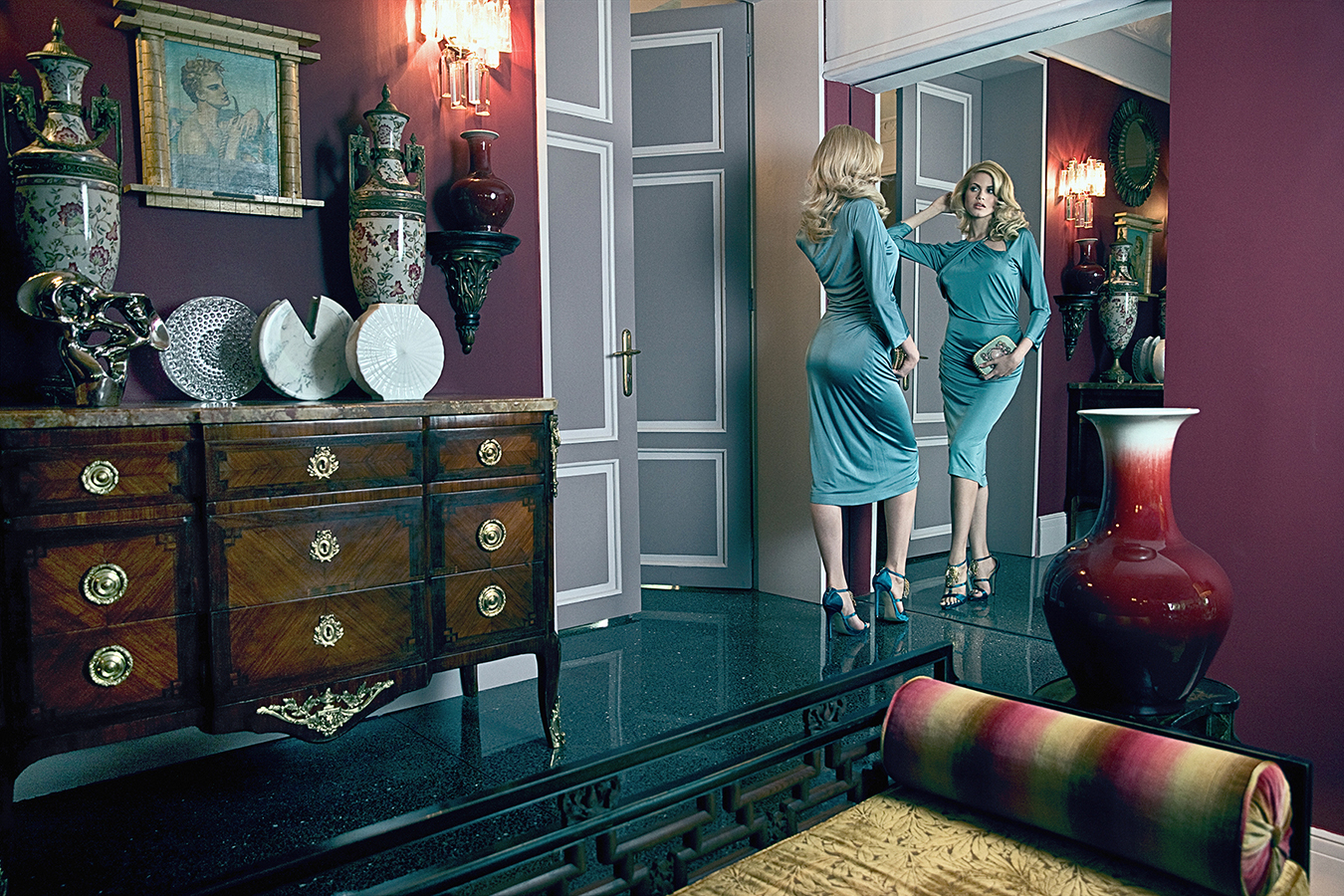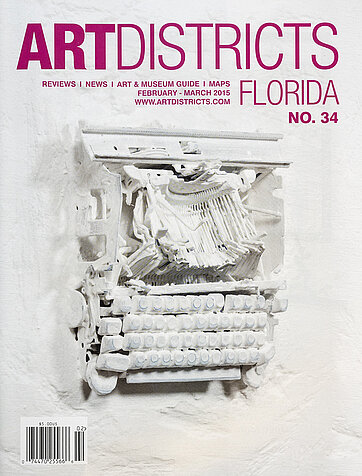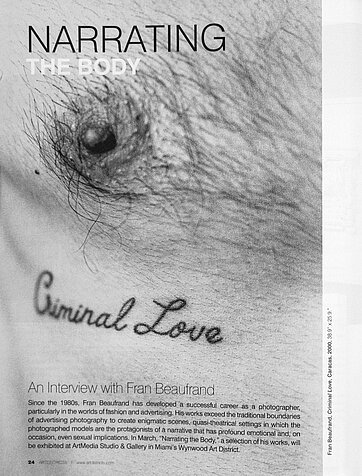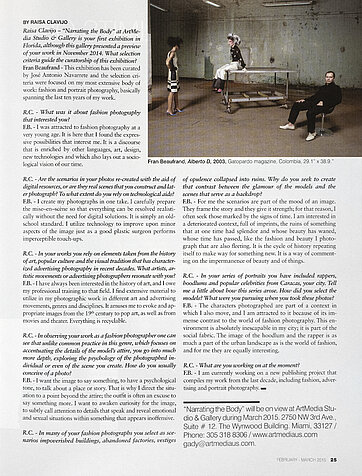Narrating The Body, An Interview with Fran Beaufrand

An Interview with Fran Beaufrand
By: Raisa Cavijo
Since the 1980s, Fran Beaufrand has developed a successful career as a photographer, particularly in the worlds of fashion and advertising. His works exceed the traditional boundaries of advertising photography to create enigmatic scenes, quasi-theatrical settings in which the photographed models are the protagonists of a narrative that has profound emotional and, on occasion, even sexual implications. In March, "Narrating the Body," a selection of his works, will be exhibited at ArtMedia Studio & Gallery in Miami's Wynwood Art District.
BY RAISA CLAVIJO
Raisa Clavijo - "Narrating the Body" at ArtMedia Studio & Gallery is your first exhibition in Florida, although this gallery presented a preview of your work in November 2014. What selection criteria guide the curatorship of this exhibition?
Fran Beaufrand - This exhibition has been curated by José Antonio Navarrete and the selection criteria were focused on my most extensive body of work: fashion and portrait photography, basically spanning the last ten years of my work.
R.C. - What was it about fashion photography that interested you?
F.B. - I was attracted to fashion photography at a very young age. It is here that I found the expressive possibilities that interest me. It is a discourse that is enriched by other languages, art, design, new technologies and which also lays out a sociological vision of our time.
R.C. - Are the scenarios in your photos re-created with the aid of digital resources, or are they real scenes that you construct and later photograph? To what extent do you rely on technological aids?
F.B. - I create my photographs in one take. I carefully prepare the mise-en-scène so that everything can be resolved realistically without the need for digital solutions. It is simply an old school standard. I utilize technology to improve upon minor aspects of the image just as a good plastic surgeon performs imperceptible touch-ups.
R.C. - In your works you rely on elements taken from the history of art, popular culture and the visual tradition that has characterized advertising photography in recent decades. What artists, artistic movements or advertising photographers resonate with you?
F.B. - I have always been interested in the history of art, and I owe my professional training to that field. I find extensive material to utilize in my photographic work in different art and advertising movements, genres and disciplines. It amuses me to evoke and appropriate images from the 19th century to pop art, as well as from movies and theater. Everything is recyclable.
R.C. - In observing your work as a fashion photographer one can see that unlike common practice in this genre, which focuses on accentuating the details of the model's attire, you go into much more depth, exploring the psychology of the photographed individual or even of the scene you create. How do you usually conceive of a photo?
F.B. - I want the image to say something, to have a psychological tone, to talk about a place or story. That is why I direct the situation to a point beyond the attire; the outfit is often an excuse to say something more. I want to awaken curiosity for the image, to subtly call attention to details that speak and reveal emotional and sexual situations within something that appears inoffensive.
R.C. - In many of your fashion photographs you select as scenarios impoverished buildings, abandoned factories, vestiges of opulence collapsed into ruins. Why do you seek to create that contrast between the glamour of the models and the scenes that serve as a backdrop?
F.B. - For me the scenarios are part of the mood of an image. They frame the story and they give it strength; for that reason, I often seek those marked by the signs of time. I am interested in a deteriorated context, full of imprints, the ruins of something that at one time had splendor and whose beauty has waned, whose time has passed, like the fashion and beauty I photograph that are also fleeting. It is the cycle of history repeating itself to make way for something new. It is a way of commenting on the impermanence of beauty and of things.
R.C. - In your series of portraits you have included rappers, hoodlums and popular celebrities from Caracas, your city. Tell me a little about how this series arose. How did you select the models? What were you pursuing when you took these photos?
F.B. - The characters photographed are part of a context in which I also move, and I am attracted to it because of its immense contrast to the world of fashion photography. This en- vironment is absolutely inescapable in my city; it is part of the social fabric. The image of the hoodlum and the rapper is as much a part of the urban landscape as is the world of fashion, and for me they are equally interesting.
R.C. - What are you working on at the moment?
F.B. - I am currently working on a new publishing project that compiles my work from the last decade, including fashion, advertising and portrait photography. - "Narrating the Body" will be on view at ArtMedia Studio & Gallery during March 2015. 2750 NW 3rd Ave., Suite # 12. The Wynwood Building, Miami, 33127 / Phone: 305 318 8306 / www.artmedia.gallery
gady@artmedia.gallery




